Padua is home to a wide variety of birds. From the majestic eagles soaring high in the sky, to the hopping sparrows in the city parks, Padua has a wonderful selection of avian life.
The diverse terrain of Padua provides a great habitat for a variety of birds, ranging from waterfowl to migratory birds.
The wetlands of Padua provide a safe haven for ducks, geese, and other waterbirds, while the open fields and meadows are home to many species of songbirds and raptors. For birdwatchers, Padua is the ideal destination to observe a variety of birds in their natural habitat.
1. Eurasian Collared Dove
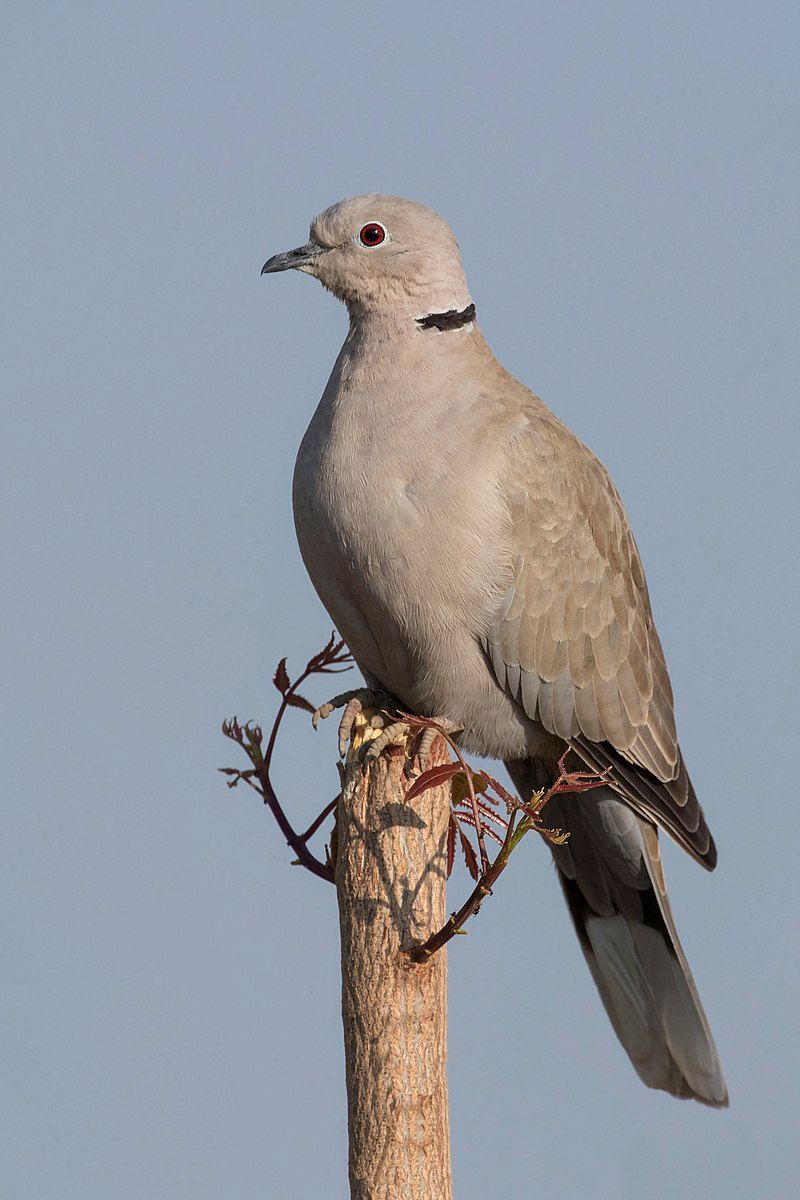
The Eurasian collared dove is a species of dove bird native to the continents of Europe and Asia. It is distinctive in its appearance, having a grey body with a black collar around its neck.
This species is also widely distributed across the world, having been introduced to Japan, North America and various Caribbean islands.
The introduction of the Eurasian collared dove to other regions of the world has been largely attributed to human activities, such as global trade, travel, and the pet trade.
The dove is popular among birdwatchers and pet enthusiasts alike, due to its attractive appearance and relatively peaceful demeanor. The species is known to be adaptable and it is often found in urbanized areas, where it can take advantage of the abundance of food sources.
In its native range, the Eurasian collared dove is a common species and can be seen in a variety of habitats. It is usually found in open woodlands, grasslands, and cultivated fields, where it can feed on seeds and other vegetation.
The dove is also known to feed on scraps of food provided by humans, which can be found near picnic sites, parks, and other places frequented by people.
The Eurasian collared dove is an important species in its native habitats, as well as in the areas where it has been introduced. It plays an important role in the food chain, helping to disperse seeds and providing food for predators.
Its adaptability and wide distribution make it an important species in many ecosystems.
| Kingdom | Animalia |
| Phylum | Chordata |
| Class | Aves |
| Order | Columbiformes |
| Family | Columbidae |
| Genus | Streptopelia |
| Species | S. decaocto |
2. Eurasian Kestrel
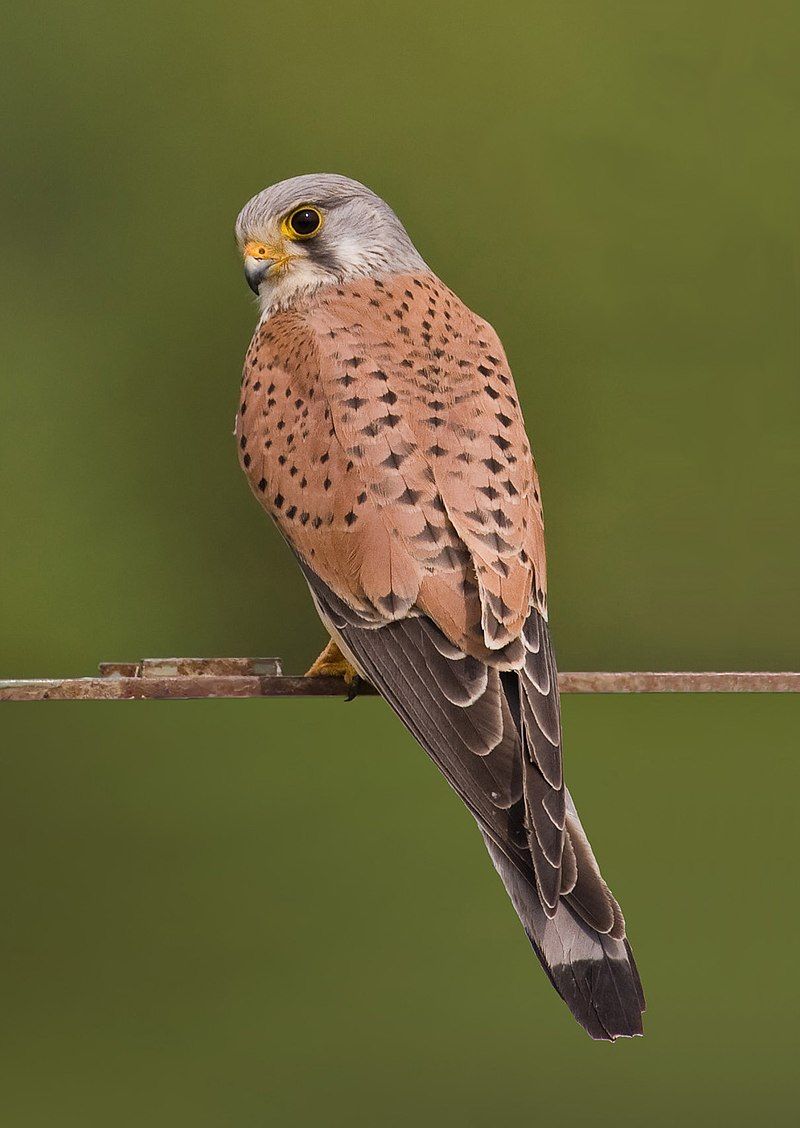
The common kestrel is a species of bird of prey belonging to the kestrel group of the falcon family Falconidae. It is found in Europe, Asia, and some parts of Africa.
The common kestrel is also known by several other names, including European kestrel, Eurasian kestrel, and Old World kestrel.
This species is easily identified by its small size and its distinctive wing markings. The common kestrel is particularly well-known in the United Kingdom, where it is the only species of kestrel commonly found.
Because of this, it is usually simply referred to as “kestrel” in the UK. This species is often seen hovering in the air, searching for small prey such as insects, small rodents, and lizards.
They also hunt from perches, using their sharp vision to spot their next meal. The common kestrel is a protected species in many parts of the world, with the UK granting it full protection under the Wildlife and Countryside Act of 1981.
This species is also listed as of least concern on the IUCN Red List.
| Kingdom | Animalia |
| Phylum | Chordata |
| Class | Aves |
| Order | Falconiformes |
| Family | Falconidae |
| Genus | Falco |
| Species | F. tinnunculus |
3. Common Swift
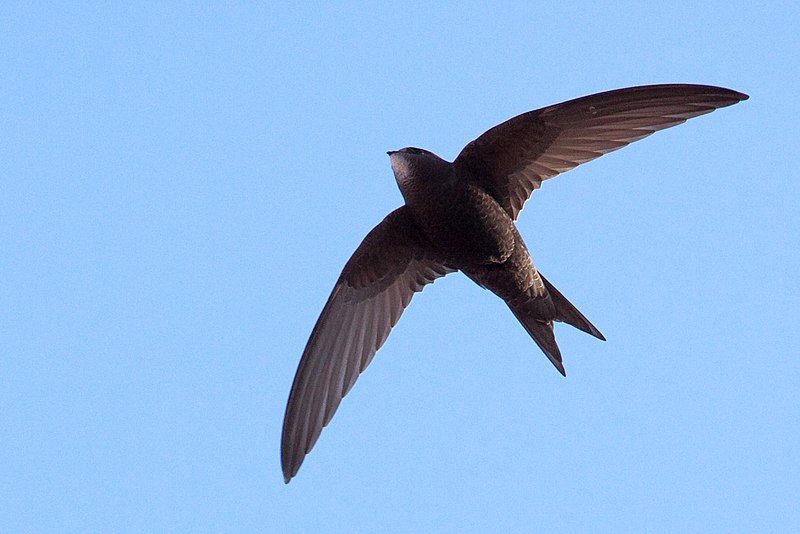
The common swift is a bird that has similarities to the barn swallow and house martin, but is larger in size. It is not related to either of these species, as it belongs to a different order of birds – the Apodiformes.
The similarities between the common swift and the barn swallow and house martin is not because of their shared ancestry, but rather because of their similar environments and habitats.
This phenomenon is known as convergent evolution, and it occurs when two unrelated species develop similar traits as a result of adapting to the same environment.
In this case, the common swift, the barn swallow and the house martin have all developed similar traits, such as their size and shape, in order to be able to live in a similar environment. This is why they appear to be so alike, despite being from different bird orders.
| Kingdom | Animalia |
| Phylum | Chordata |
| Class | Aves |
| Clade | Strisores |
| Order | Apodiformes |
| Family | Apodidae |
| Genus | Apus |
| Species | A. apus |
4. Cuculus Canorus
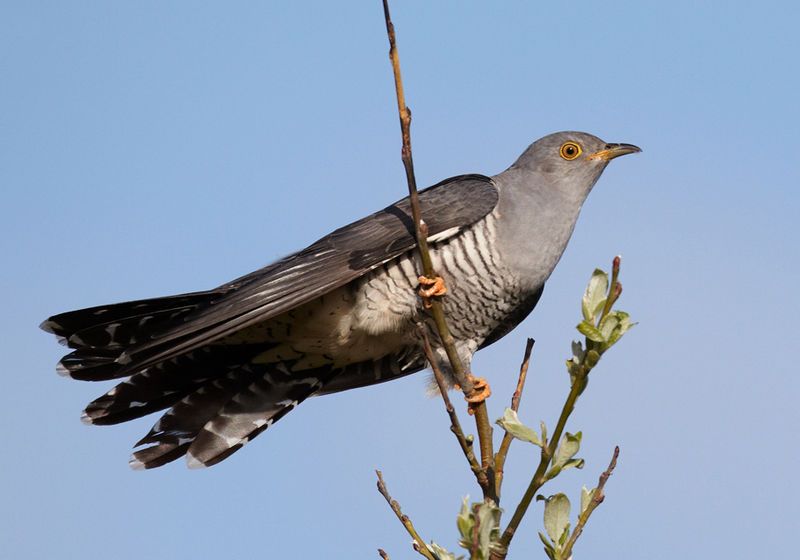
The common cuckoo is a species of bird belonging to the Cuculiformes order, which is a group that also includes roadrunners, anis, and coucals. This species of cuckoo is a migratory bird, meaning it moves between two different areas at different times of the year.
During the summer, it can be found in Europe and Asia, and during the winter, it migrates to Africa.
This type of migration is a common occurrence for many species of birds, as the changing of the seasons often brings with it the need to search for food and shelter in different areas.
This species of cuckoo is particularly adaptable and can be found in a variety of climates and habitats. It is also relatively abundant, making it a popular choice for birders and nature lovers.
| Kingdom | Animalia |
| Phylum | Chordata |
| Class | Aves |
| Order | Cuculiformes |
| Family | Cuculidae |
| Genus | Cuculus |
| Species | C. canorus |
5. Eurasian Coot
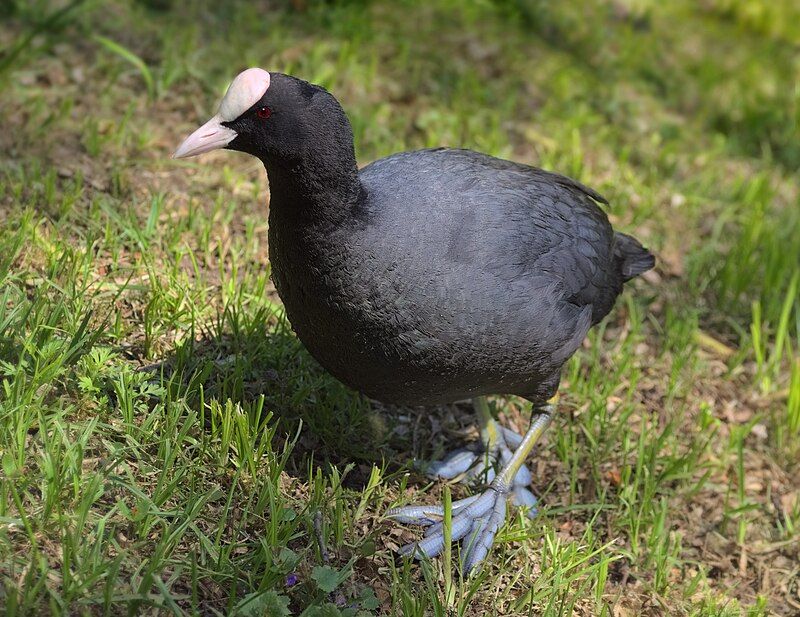
The Eurasian coot, also known as the common coot or Australian coot, is a member of the Rallidae family of birds commonly known as rails and crakes. It is native to Europe, Asia, Australia, New Zealand, and parts of North Africa.
This bird is easily identifiable by its slaty-black body, glossy black head and a white bill with a white frontal shield. The Eurasian coot is an adept swimmer and feeds mainly on aquatic plants and insects.
It mainly inhabits wetlands and can be found around lakes, ponds, rivers, and marshes. It is a social bird and is often seen in large flocks. It is also known to be quite vocal, with its call consisting of a loud, ringing “kowk-kowk”.
The Eurasian coot is a species of least concern according to the IUCN Red List.
| Kingdom | Animalia |
| Phylum | Chordata |
| Class | Aves |
| Order | Gruiformes |
| Family | Rallidae |
| Genus | Fulica |
| Species | F. atra |
6. Mallard
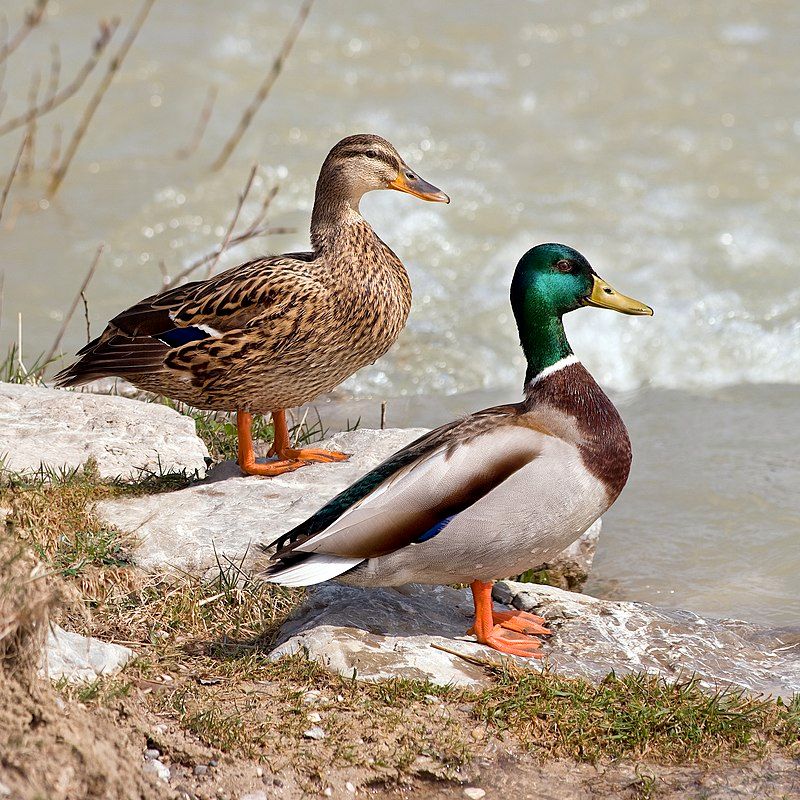
The mallard or wild duck is a species of dabbling duck that is found in many parts of the world. It has a wide range, spanning from temperate and subtropical regions of the Americas, Eurasia, and North Africa.
This species has also been introduced to certain areas outside of its native range, such as New Zealand, Australia, Peru, Brazil, Uruguay, Argentina, Chile, Colombia, the Falkland Islands, and South Africa.
The mallard is an adaptable species, able to colonize new habitats and take advantage of new resources. This is likely the reason that it has been able to be introduced to so many locations outside of its original range.
The mallard is a popular species of waterfowl, and its ability to thrive in a variety of habitats has made it a successful colonizer.
| Kingdom | Animalia |
| Phylum | Chordata |
| Class | Aves |
| Order | Anseriformes |
| Family | Anatidae |
| Genus | Anas |
| Species | A. platyrhynchos |
7. Common Crane
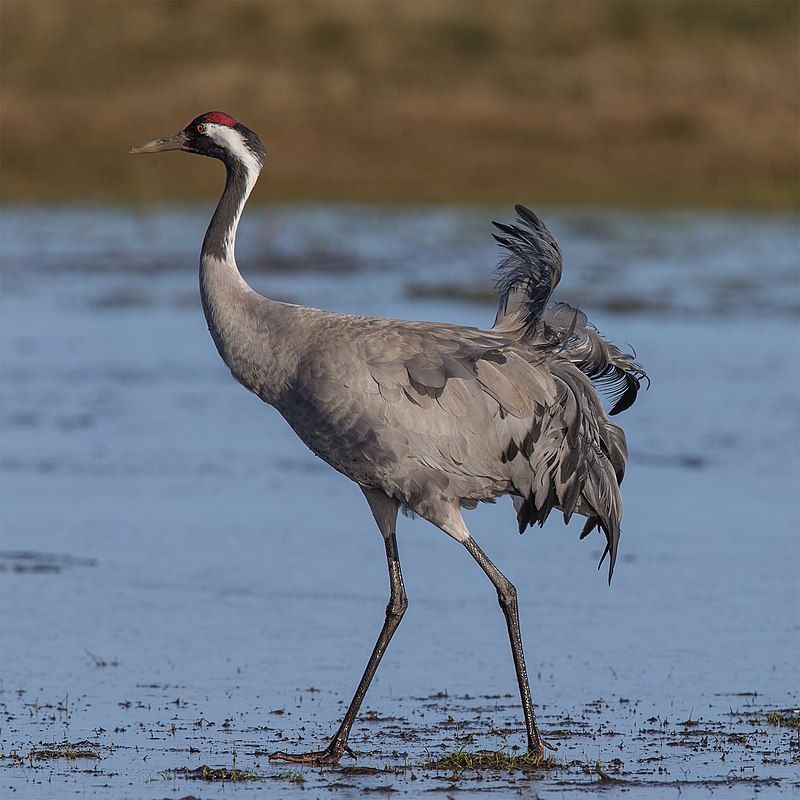
The Common Crane is a species of bird belonging to the Gruidae family, which includes all cranes.
It is a medium-sized bird, and is the only crane species found in Europe aside from the Demoiselle Crane and the Siberian Crane, which are both only regularly seen in the far eastern parts of the continent.
This species is also known as the Eurasian Crane, and is found in various habitats, such as wetlands, meadows, and marshes. It has a long neck and legs, with a wingspan of up to 2.3 meters.
Its plumage is grey and white with a distinctive red crown, and its diet consists of a variety of plant and animal matter. In the wild, Common Cranes have been known to live up to 25 years.
| Kingdom | Animalia |
| Phylum | Chordata |
| Class | Aves |
| Order | Gruiformes |
| Family | Gruidae |
| Genus | Grus |
| Species | G. grus |
8. Water Rail
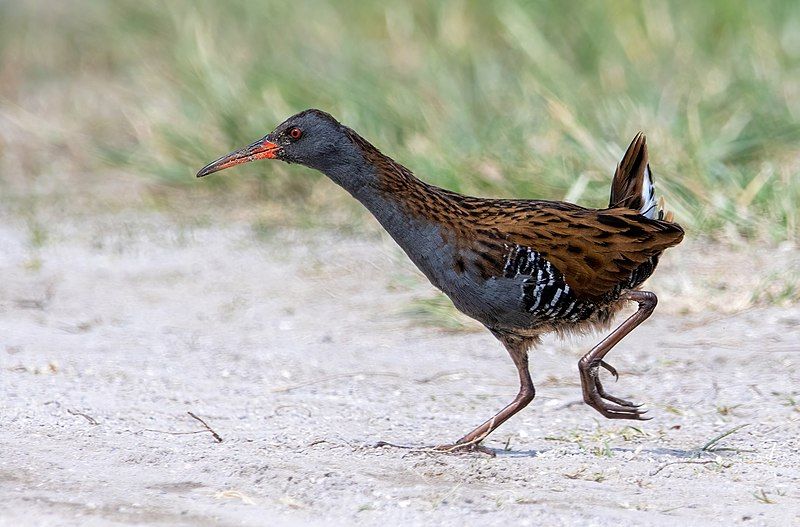
The water rail is a species of the rail family, which is a group of birds that inhabit wetland areas. This particular species is found throughout Europe, Asia, and North Africa in areas that are densely vegetated.
For those populations that live in more northern and eastern regions, they migrate to warmer climates during the winter months. However, those that live in the warmer parts of its breeding range are permanent residents and do not need to migrate.
| Kingdom | Animalia |
| Phylum | Chordata |
| Class | Aves |
| Order | Gruiformes |
| Family | Rallidae |
| Genus | Rallus |
| Species | R. aquaticus |
9. Grey Heron
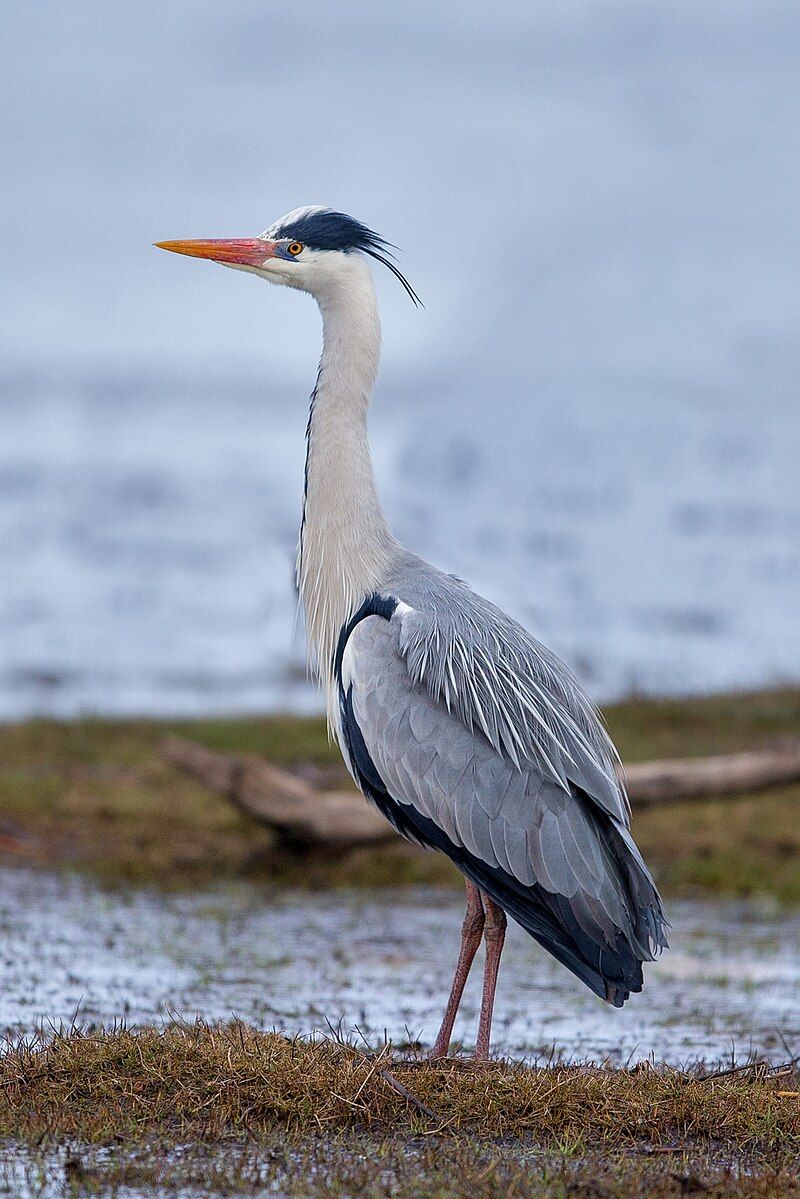
The grey heron is a large, long-legged bird belonging to the heron family, Ardeidae. It is native to temperate areas across Europe, Asia, and some parts of Africa.
This bird is known to stay in the same area for most of the year, but some of the northern populations will migrate south during the autumn.
The heron is a wading bird, which means it hunts and forages in shallow waters, eating small fish, amphibians, and other aquatic creatures. It has a long neck, a hooked bill, and usually a grey or white plumage. It stands up to 1m tall and has a wingspan of up to 2m.
| Kingdom | Animalia |
| Phylum | Chordata |
| Class | Aves |
| Order | Pelecaniformes |
| Family | Ardeidae |
| Genus | Ardea |
| Species | A. cinerea |
10. Common Pochard
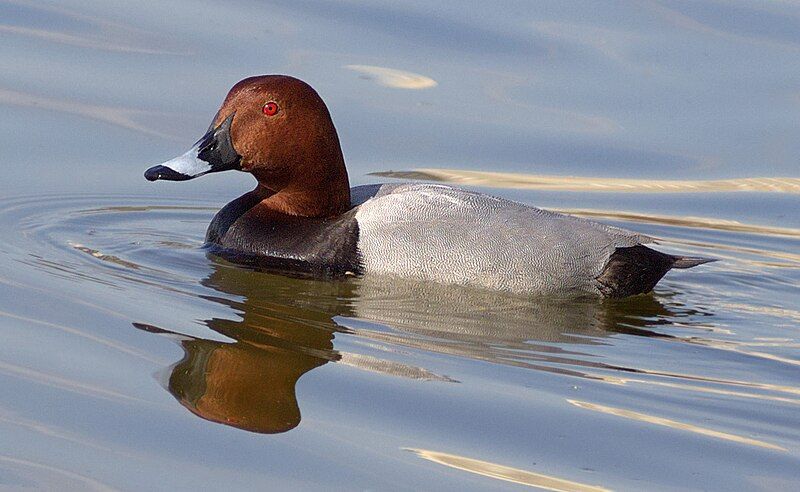
The common pochard is a medium-sized diving duck that can be found all over the world. Its scientific name is derived from two sources, Greek and Latin.
The word “aithuia”, which originates from Greek, is an unidentified seabird that was mentioned by authors such as Hesychius and Aristotle. Additionally, the scientific name also has Latin roots, specifically the word “ferina”.
This word is derived from “ferus”, which translates to “wild”. This is an appropriate name for a wild duck, as pochards are known to inhabit various wetlands and water bodies.
| Kingdom | Animalia |
| Phylum | Chordata |
| Class | Aves |
| Order | Anseriformes |
| Family | Anatidae |
| Genus | Aythya |
| Species | A. ferina |
11. Ferruginous Duck
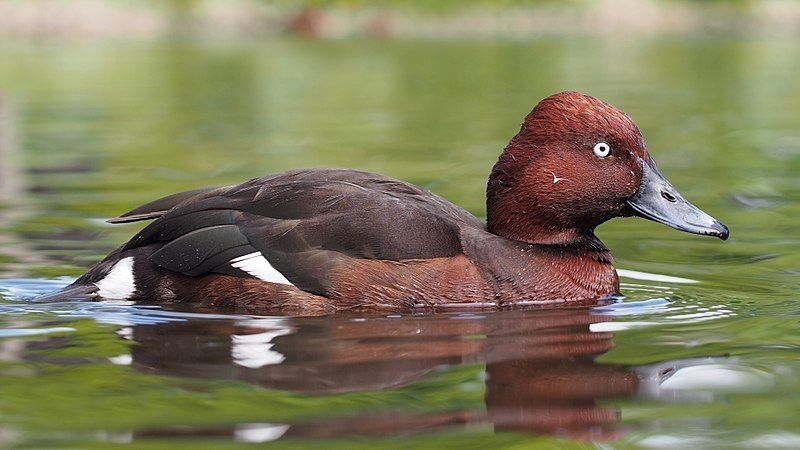
The ferruginous duck is a species of duck native to Eurosiberia, and is also known as the ferruginous pochard, common white-eye, or white-eyed pochard. It is a medium-sized diving duck, and the scientific name for this species is derived from Greek words.
The word “aithuia” is an unidentified seabird which has been mentioned by various authors, such as Hesychius and Aristotle, while “nyrok” is the Russian name for a duck.
This species is easily recognizable by its unique colouring, which is a mixture of chestnut and rusty-white patches. It is a strong swimmer and has adapted well to living in colder climates.
The ferruginous duck is usually found in small groups or pairs, and has been known to form large flocks in winter. It feeds mainly on aquatic insects and small fish, but also eats crustaceans, seeds, and plant material.
The ferruginous duck is listed as near threatened due to the loss of habitat and water pollution. Conservation efforts are ongoing to ensure the survival of this species.
| Kingdom | Animalia |
| Phylum | Chordata |
| Class | Aves |
| Order | Anseriformes |
| Family | Anatidae |
| Genus | Aythya |
| Species | A. nyroca |
12. Mute Swan
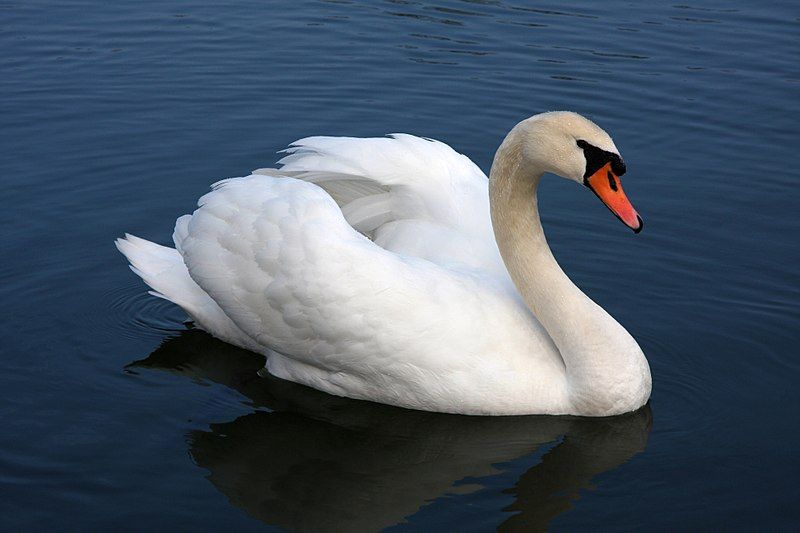
The mute swan is a species of swan that belongs to the Anatidae family of waterfowl. It is native to many areas of Europe and Siberia, as well as the northernmost parts of Africa. These swans are easily recognizable due to their white feathers and long, curved necks.
They have a strong relationship with their environment, and the sight of a mute swan is often associated with serenity. Mute swans are very social creatures, living in pairs or small groups. They are also very territorial and fierce when defending their young.
The mute swan is omnivorous, primarily eating aquatic plants and small aquatic animals.
They have strong, webbed feet that allow them to paddle effortlessly through the water.Mute swans are also one of the longest-living species of waterfowl, with a lifespan of up to 20 years in the wild.
This allows them to form close bonds with their environment, and in some areas they have become a beloved symbol of grace and beauty.
Unfortunately, due to their strong relationship with their environment, the mute swan is facing a range of threats, including habitat loss and hunting. Thankfully, conservation measures are now in place to protect this species and ensure its long-term survival.
| Kingdom | Animalia |
| Phylum | Chordata |
| Class | Aves |
| Order | Anseriformes |
| Family | Anatidae |
| Genus | Cygnus |
| Species | C. olor |
13. Eurasian Wigeon
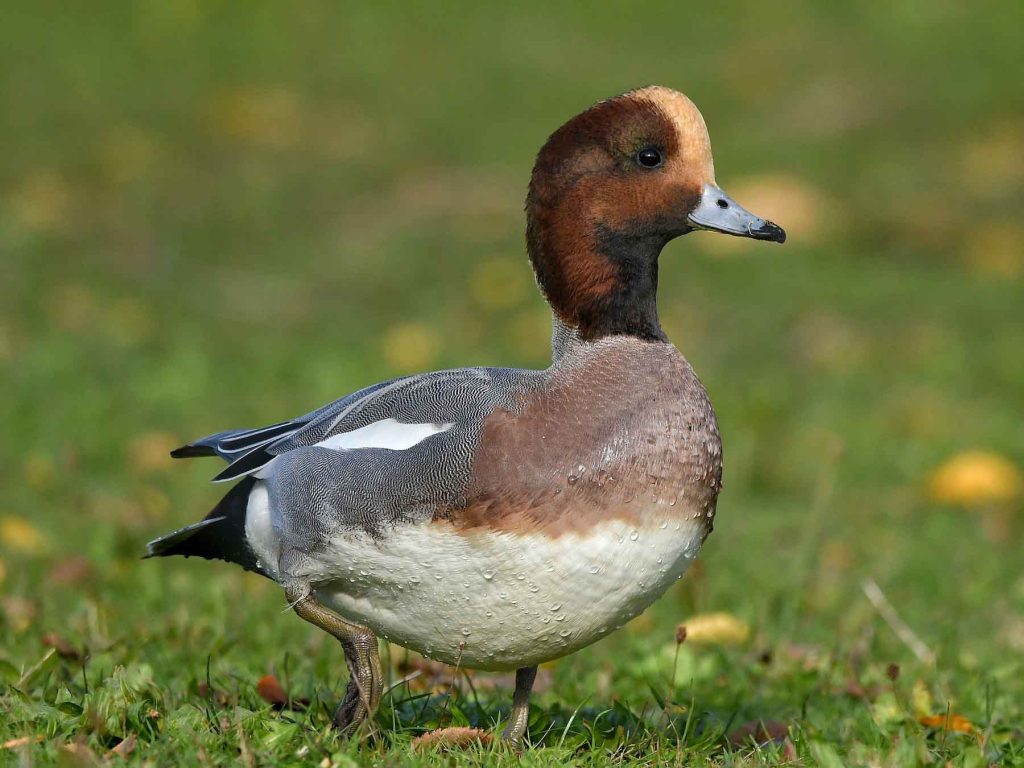
Source: ebird.org
The Eurasian wigeon is a species of dabbling duck, which is part of the genus Mareca. The term ‘wigeon’ is used to refer to all three species of this genus, although it is more specifically used to refer to the Eurasian wigeon.
This species is found throughout its Palearctic range, meaning it is widespread and considered common. The Eurasian wigeon is also known as the European widgeon or simply the wigeon.
It is easily identified by its distinctive plumage, which is typically gray-brown on the back, white on the chest and belly, and a bright white stripe that runs along the back of the neck. The male’s head is usually black and white, while the female’s is more brownish-gray.
| Kingdom | Animalia |
| Phylum | Chordata |
| Class | Aves |
| Order | Anseriformes |
| Family | Anatidae |
| Genus | Mareca |
| Species | M. penelope |
14. European Turtle Dove
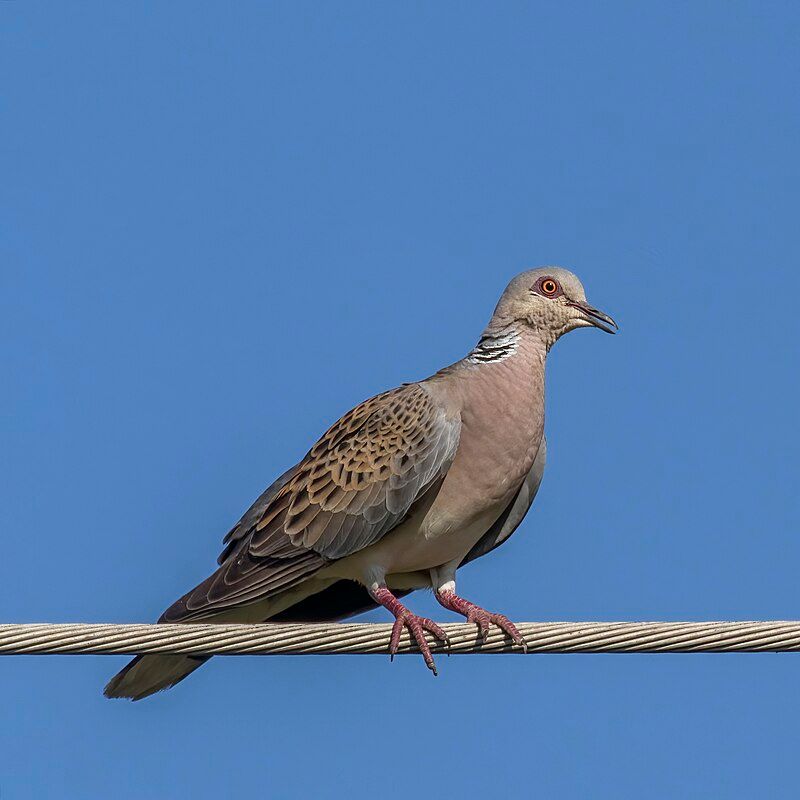
The European turtle dove is a species of bird that belongs to the family Columbidae, which includes both doves and pigeons. This species is widely distributed across the southwestern Palearctic region, which includes parts of northern Africa.
It breeds in these areas during the summer months and then migrates south to the northern parts of sub-Saharan Africa during the winter season. This species is mainly found in open woodlands and cultivated areas, but can also be seen in parks and gardens.
Its diet consists mainly of seeds and grains, and it will occasionally feed on insects. The European turtle dove is a social species, often forming large flocks when migrating or foraging.
It has a distinctive trilling call that can be heard during the breeding season, which helps to establish and maintain territories. With its beautiful plumage and melodic calls, the European turtle dove is an important part of many Palearctic ecosystems.
| Kingdom | Animalia |
| Phylum | Chordata |
| Class | Aves |
| Order | Columbiformes |
| Family | Columbidae |
| Genus | Streptopelia |
| Species | S. turtur |
15. Gadwall
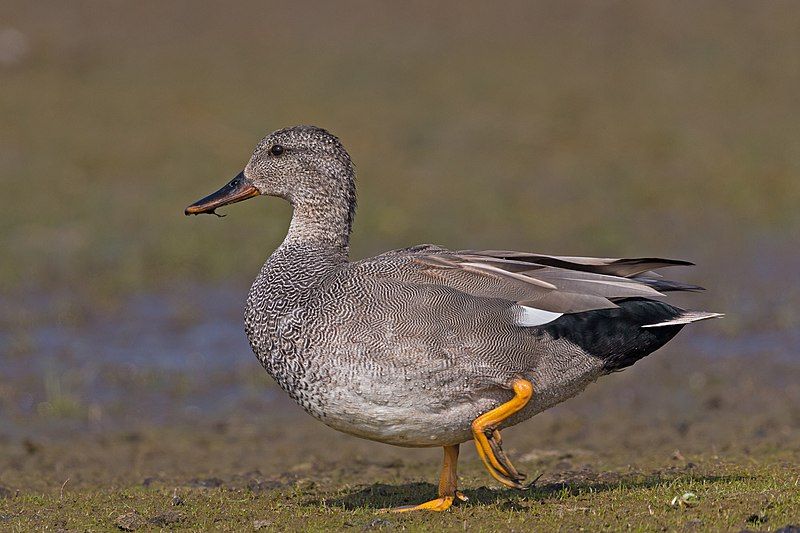
The gadwall is a species of duck belonging to the Anatidae family, which includes swans, geese, and other ducks. This species is found in many parts of the world, from Europe and North America to Asia and Australia.
It is a fairly common bird and is often seen in wetland habitats such as lakes, marshes, and ponds. The gadwall is usually easily identified by its gray and black plumage, with a white patch near the base of the neck and a white line along the sides.
It has a long, pointed bill that is grayish-green in color and a yellowish-orange patch around the eyes. The gadwall is a dabbling duck, which means it prefers to feed in shallow water and can be found in small groups or in large flocks.
It feeds on a variety of aquatic plants, seeds, and invertebrates, and can often be seen in shallow areas, such as shorelines or wetlands, searching for food.
The gadwall is a hardy species, and is able to adapt to a variety of habitats, making it a successful and resilient species.
| Kingdom | Animalia |
| Phylum | Chordata |
| Class | Aves |
| Order | Anseriformes |
| Family | Anatidae |
| Genus | Mareca |
| Species | M. strepera |
16. Great-Crested Grebe
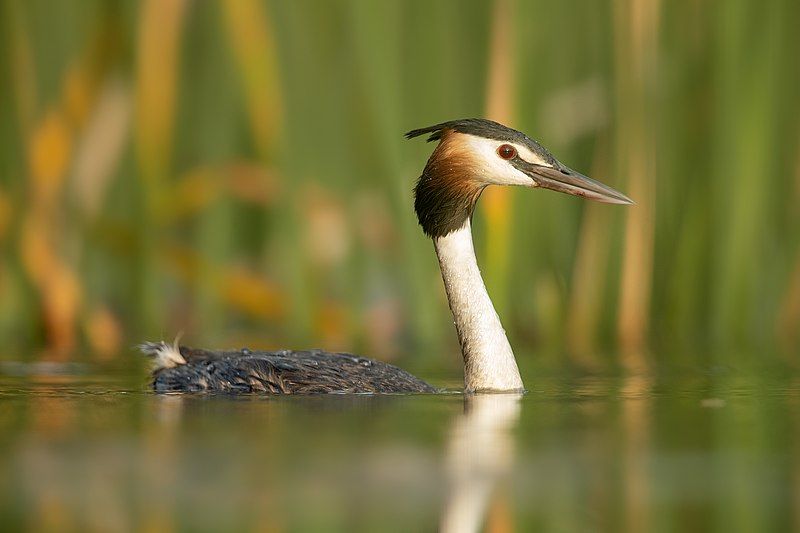
The great crested grebe is a species of waterbird that belongs to the family of grebes. It is a medium-sized bird, with a long neck, a pointed bill and a long, pointed tail. Its main distinguishing feature is its elaborate mating display.
During the breeding season, males will perform a spectacular courtship ritual, involving a series of head and wing movements accompanied by a series of low-pitched calls. The male will also bring gifts of vegetation to the female as a sign of his devotion.
These displays take place in shallow waters, where the birds can be observed by humans. The great crested grebe is native to Europe, Asia and North Africa, but it is also found in certain parts of the United States and Canada.
It primarily inhabits freshwater bodies, such as ponds, lakes and marshes, where it feeds on fish, crustaceans, insects, and other aquatic life.
It is an excellent swimmer and is able to dive to depths of up to 30 feet in search of food. The great crested grebe is listed as an endangered species in some parts of its range. Its population is declining due to habitat destruction, pollution, and hunting.
Conservation efforts are being made to protect the species and its habitat.
| Kingdom | Animalia |
| Phylum | Chordata |
| Class | Aves |
| Order | Podicipediformes |
| Family | Podicipedidae |
| Genus | Podiceps |
| Species | P. cristatus |
17. Little Crake
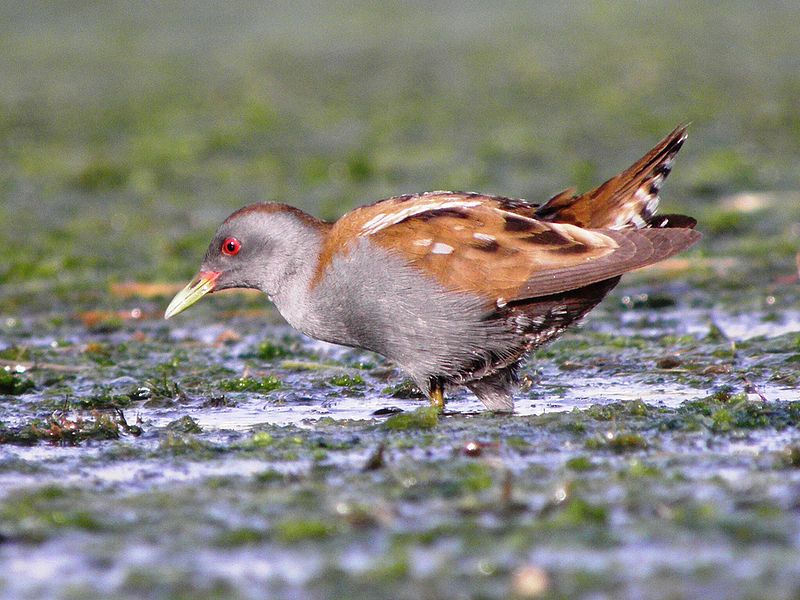
The little crake is a very small waterbird that belongs to the family Rallidae. Its name is derived from the Latin word parva, which means “small”. This bird is found across Europe, mostly in the eastern part of the continent but also extending into western Asia.
During the winter season, the little crake migrates to Africa, where it spends its time until the spring season. The breeding habitat of the little crake consists of reed beds. This species prefers a habitat that is wet, with plenty of vegetation, such as that found in reed beds.
This type of wetland provides the bird with plenty of food sources, such as insects, spiders, worms, and small fish. The reed beds also give the little crake a safe place to nest and raise its young. The little crake is a migratory species.
During the winter months, it flies south to Africa, where it spends its time until the spring season.
This gives the bird a chance to escape the cold winter weather and find a more hospitable climate in Africa. The little crake is a fascinating bird that is well adapted to its wetland habitat.
Its small size, migratory habits, and reliance on reed beds for breeding make it an important species in Europe and Western Asia. As its name suggests, the little crake is indeed a small but powerful bird.
| Kingdom | Animalia |
| Phylum | Chordata |
| Class | Aves |
| Order | Gruiformes |
| Family | Rallidae |
| Genus | Zapornia |
| Species | Z. parva |
18. Little Grebe
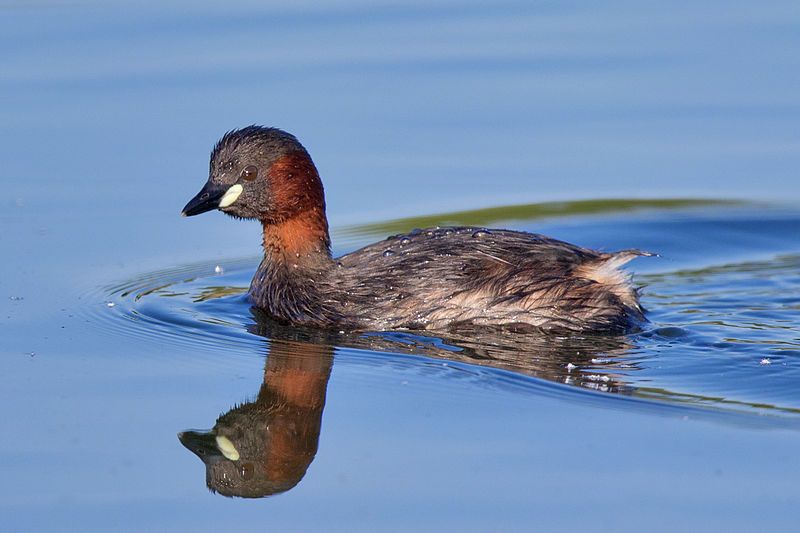
The little grebe, commonly known as the dabchick, is a member of the family of water birds known as grebes. The word “grebe” is derived from Ancient Greek, with “takhus” meaning “fast” and “bapto” meaning “to sink under”.
The species name, ruficollis, is derived from Latin, with “rufus” meaning “red” and “-collis” meaning “-necked”, which itself is derived from the Latin word for “neck”, which is “collum”.
The little grebe is a small water bird that is usually seen in freshwater habitats such as lakes and ponds. It has a compact body and pointed bill. Its name comes from its habit of diving or “dabbing” with its head.
The neck of the little grebe is usually reddish in color, which is why its species name is ruficollis. The little grebe is a shy and skittish bird, and it can be hard to spot as it dives for its food. It mostly eats small fish, aquatic insects, and crustaceans.
It is a monogamous bird, and pairs will defend their nesting territory from other birds. The nest is usually built among vegetation near the water’s edge or on a floating platform in shallow water. The little grebe is a fascinating bird with a unique name and behavior.
Its scientific name is derived from its physical features and its behavior, which is indicative of its place in the water bird family. It is an important part of its ecosystem and it is important to conserve its habitats so that this species can continue to thrive.
| Kingdom | Animalia |
| Phylum | Chordata |
| Class | Aves |
| Order | Podicipediformes |
| Family | Podicipedidae |
| Genus | Tachybaptus |
| Species | T. ruficollis |
19. Common Kingfisher
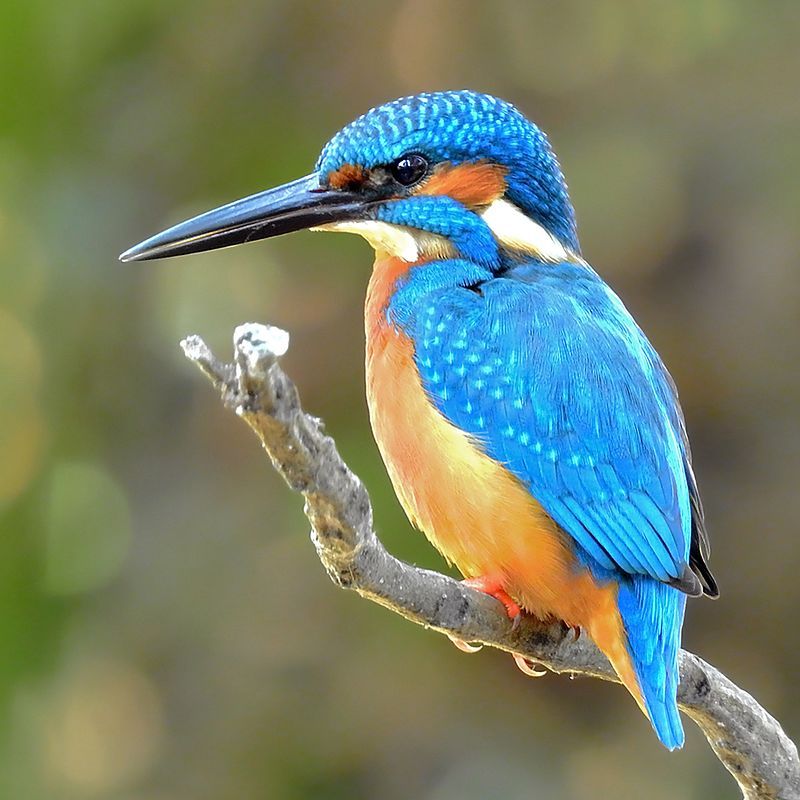
The common kingfisher is a small bird native to Eurasia and North Africa and is known by a variety of names, including Eurasian kingfisher and river kingfisher. There are seven distinct subspecies of the common kingfisher, each with its own distinct range and habitat.
Generally, the common kingfisher is a resident species, living in a particular area for its entire life. However, it does migrate seasonally from areas where the rivers freeze in the winter.
This allows the species to find more hospitable areas with open water, where it can find food and seek shelter from the cold weather.
The common kingfisher is a beautiful and unique species, and its wide distribution across Eurasia and North Africa is a testament to its adaptability over the centuries.
| Kingdom | Animalia |
| Phylum | Chordata |
| Class | Aves |
| Order | Coraciiformes |
| Family | Alcedinidae |
| Genus | Alcedo |
| Species | A. atthis |
20. Alpine Swift
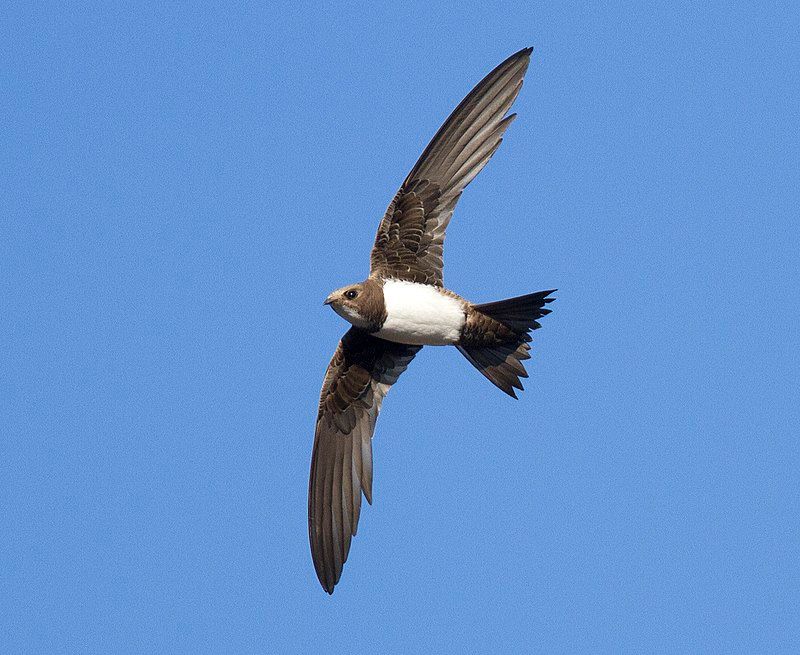
The Alpine Swift is a species of swift found in a variety of regions throughout Africa, southern Europe and Asia. This species of swift is known for its migratory behavior, breeding in the mountains from southern Europe all the way to the Himalaya.
During the winter months, the southern European population of Alpine Swifts migrates to more southern regions of Africa. This species of swift is similar to the common swift in that they are highly migratory, travelling great distances between countries.
The Alpine Swift is an amazing species of bird that has adapted to the varying climates of many different regions. It is an incredible species that has managed to survive and thrive in the ever-changing environment.
| Kingdom | Animalia |
| Phylum | Chordata |
| Class | Aves |
| Clade | Strisores |
| Order | Apodiformes |
| Family | Apodidae |
| Genus | Tachymarptis |
| Species | T. melba |
21. Pallid Swift
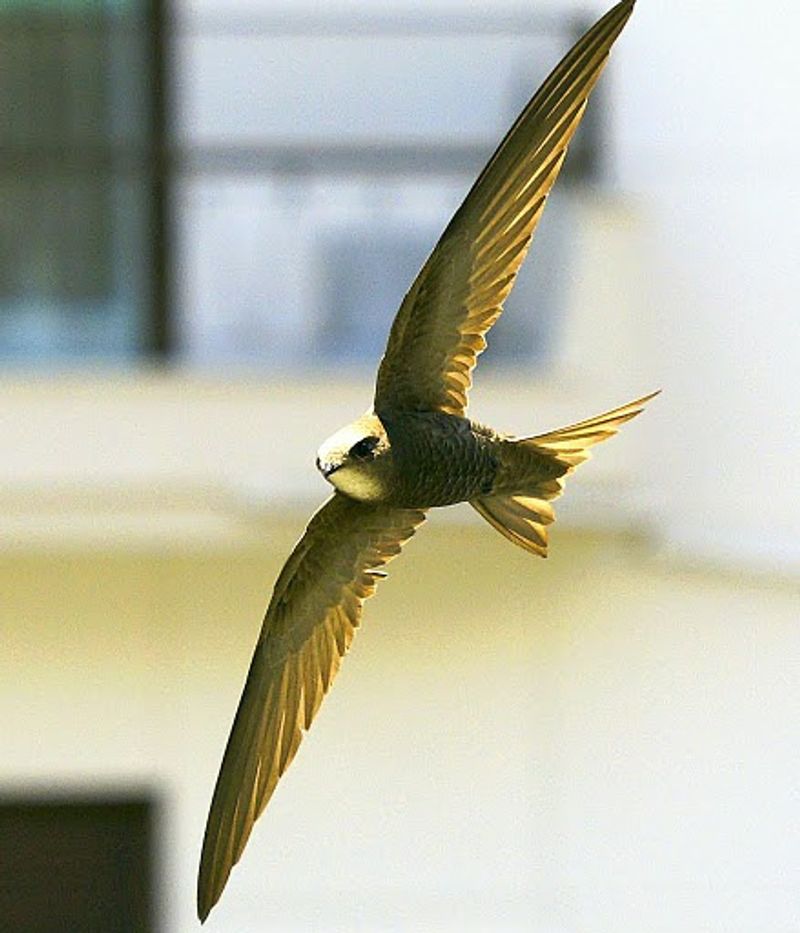
The pallid swift is a species of swift, a type of bird of the Apodidae family. They are known for their short legs, which they use primarily for clinging to vertical surfaces such as walls and cliffs.
The genus name Apus is derived from Latin, meaning a type of swallow with no feet, and pallidus is Latin for “pale”. Pallid swifts never settle voluntarily on the ground, as they prefer to stay in the air and nest on vertical surfaces.
They are fast flyers and can reach speeds of up to 31 miles per hour. Unlike many other species of bird, pallid swifts do not migrate, but instead remain in the same areas throughout the year.
They feed on aerial insects, making them an important part of the food chain for their local habitats.
| Kingdom | Animalia |
| Phylum | Chordata |
| Class | Aves |
| Clade | Strisores |
| Order | Apodiformes |
| Family | Apodidae |
| Genus | Apus |
| Species | A. pallidus |
22. Black-Winged Stilt
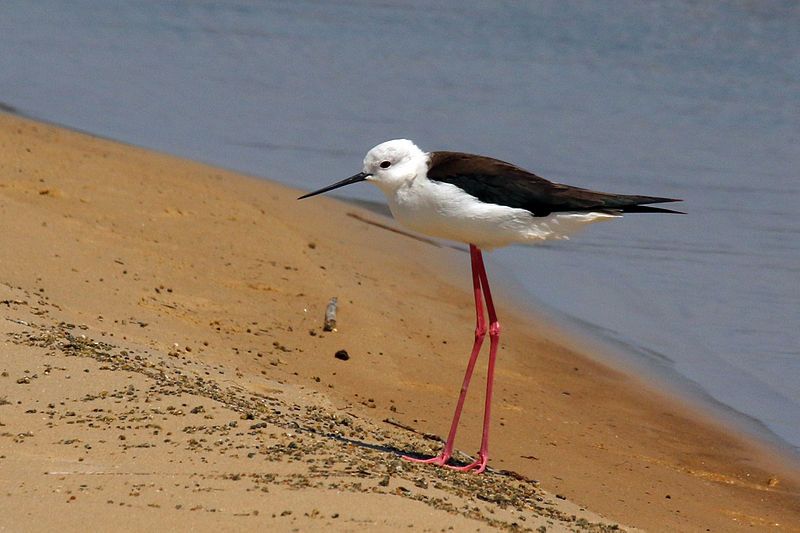
The black-winged stilt is a type of bird that belongs to the avocet and stilt family. It is a wader, which is a type of bird that uses its long legs to wade in shallow water in order to find food. The black-winged stilt is very common and can be found all over the world.
Its scientific name is H. himantopus. This species has a very wide range and can be seen in many different countries. The black-winged stilt has long, slim legs that allow it to stand in the shallow water and search for food.
It has black wings and a white body with a black head and beak. The bird also has a black patch on its back, which gives it its name. The black-winged stilt is a beautiful bird to observe in its natural habitat and is a delight to watch as it searches for food.
| Kingdom | Animalia |
| Phylum | Chordata |
| Class | Aves |
| Order | Charadriiformes |
| Family | Recurvirostridae |
| Genus | Himantopus |
| Species | H. himantopus |
23. Long-Tailed Duck
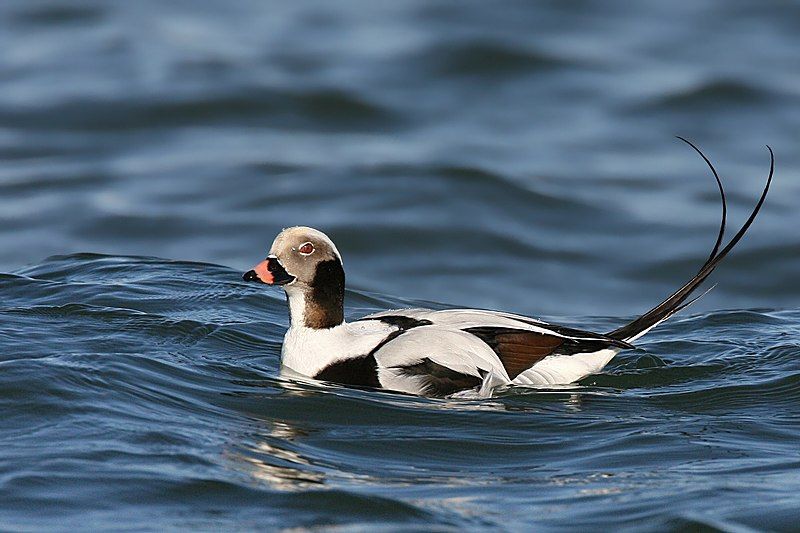
The long-tailed duck, formerly known as the oldsquaw, is a species of sea duck that is found in the far northern regions of the world. It is classified as a medium-sized duck, with an average length of between 16 and 21 inches.
This species of duck breeds in the tundra and taiga regions of the Arctic, and it is well-adapted to the harsh conditions of this region.
During the winter months, the long-tailed duck migrates southward, preferring to winter along the northern coastlines of the Atlantic and Pacific Oceans. It is a unique species in that it is the only member of its genus, Clangula.
The long-tailed duck is well-known for its distinctive long tail, which gives it its name. This species of duck has a number of other identifying features, such as a black head, white neck, brownish-black breast, and white belly.
The male and female of this species look very similar, and the male is slightly larger than the female. The long-tailed duck can be found in a variety of habitats, including marshes, shallow lakes, and rivers.
It feeds mainly on aquatic invertebrates, such as insects, crustaceans, and mollusks. The long-tailed duck is listed as a species of least concern by the International Union for Conservation of Nature (IUCN), due to its large population and wide range.
However, due to increasing levels of human disturbance and water pollution, the population of this species is declining.
In order to ensure the continued survival of the long-tailed duck, it is essential that its habitat is protected and that efforts are made to reduce water pollution.
| Kingdom | Animalia |
| Phylum | Chordata |
| Class | Aves |
| Order | Anseriformes |
| Family | Anatidae |
| Genus | Clangula |
| Species | C. hyemalis |
24. Common Scoter
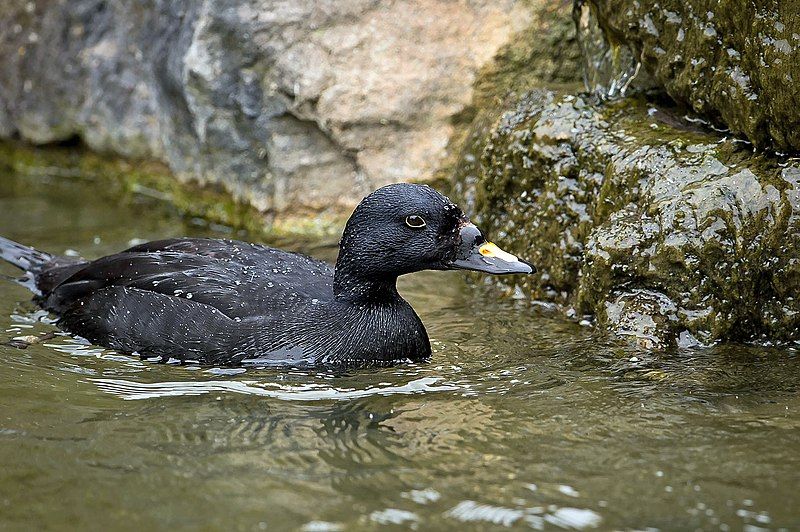
The Common Scoter is a large sea duck which lives in the far north of Europe, extending as far east as the Olenyok River. It is approximately 43-54 cm in length.
The genus name of this duck, Melanetta, is derived from Ancient Greek, with melas meaning “black” and netta meaning “duck”. The species name, niger, is from Latin and it means “shining black”.
This is a fitting description for the Common Scoter, as it is a black duck with a glossy sheen to its feathers. The Common Scoter is a unique and beautiful species of duck that can be found in the far north of Europe.
| Kingdom | Animalia |
| Phylum | Chordata |
| Class | Aves |
| Order | Anseriformes |
| Family | Anatidae |
| Genus | Melanitta |
| Species | M. nigra |
Conclusion
Birds in Padua are a vital part of the local ecosystem. They provide a variety of ecological benefits such as pollination, pest control, and seed dispersal. Additionally, birds are a source of beauty and wonder, and their songs can bring joy to Padua’s residents.
It is important that we protect and conserve Padua’s bird populations so that they can continue to enrich our environment and our lives.